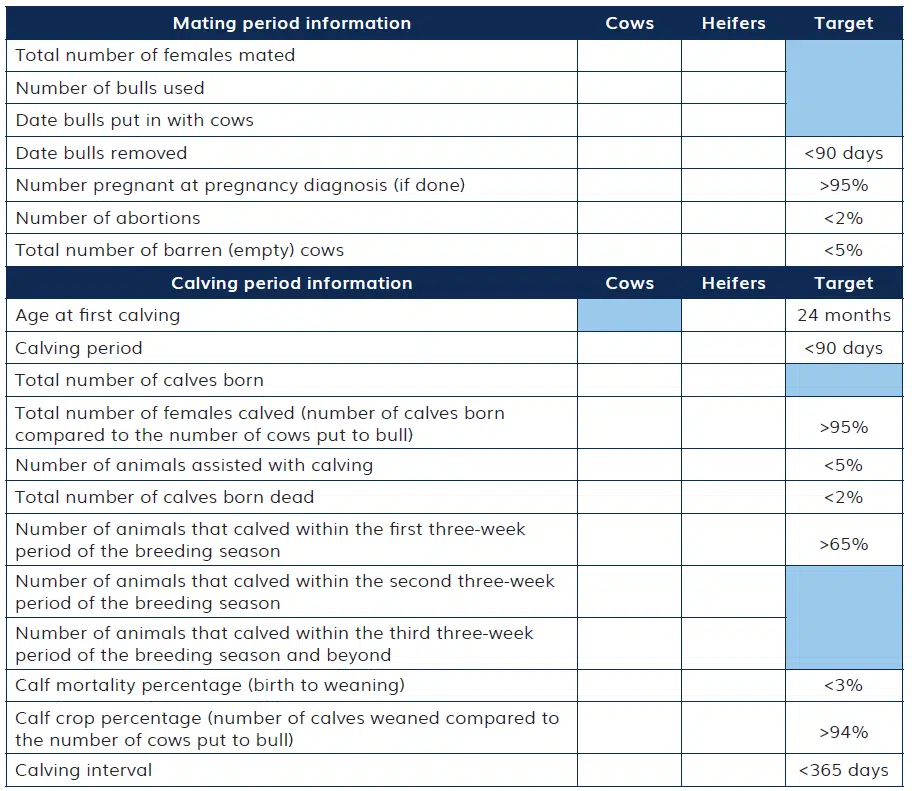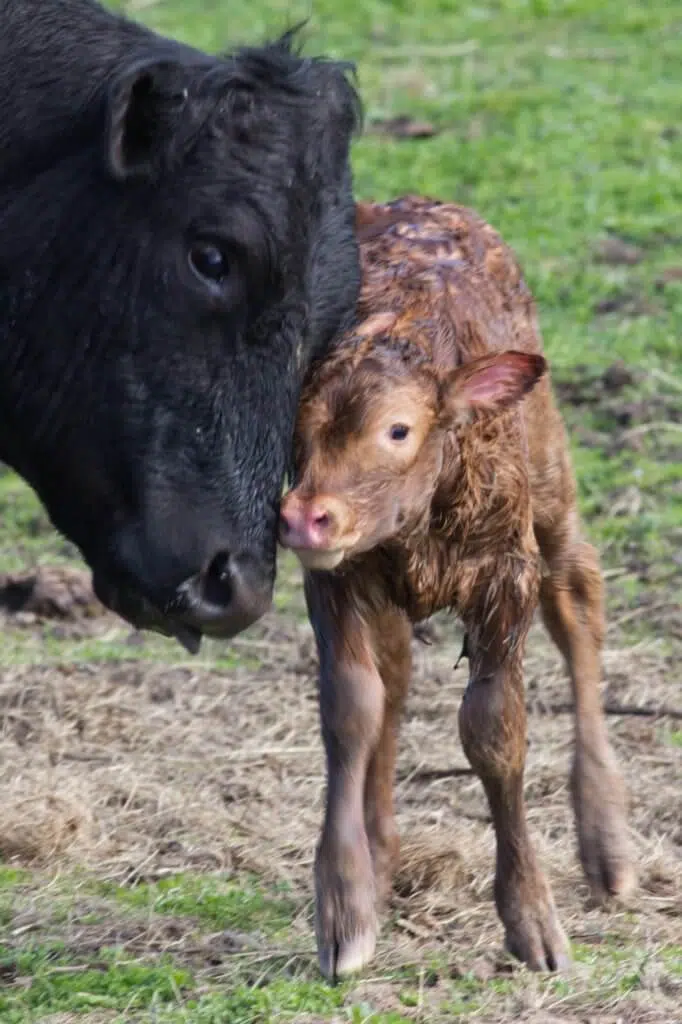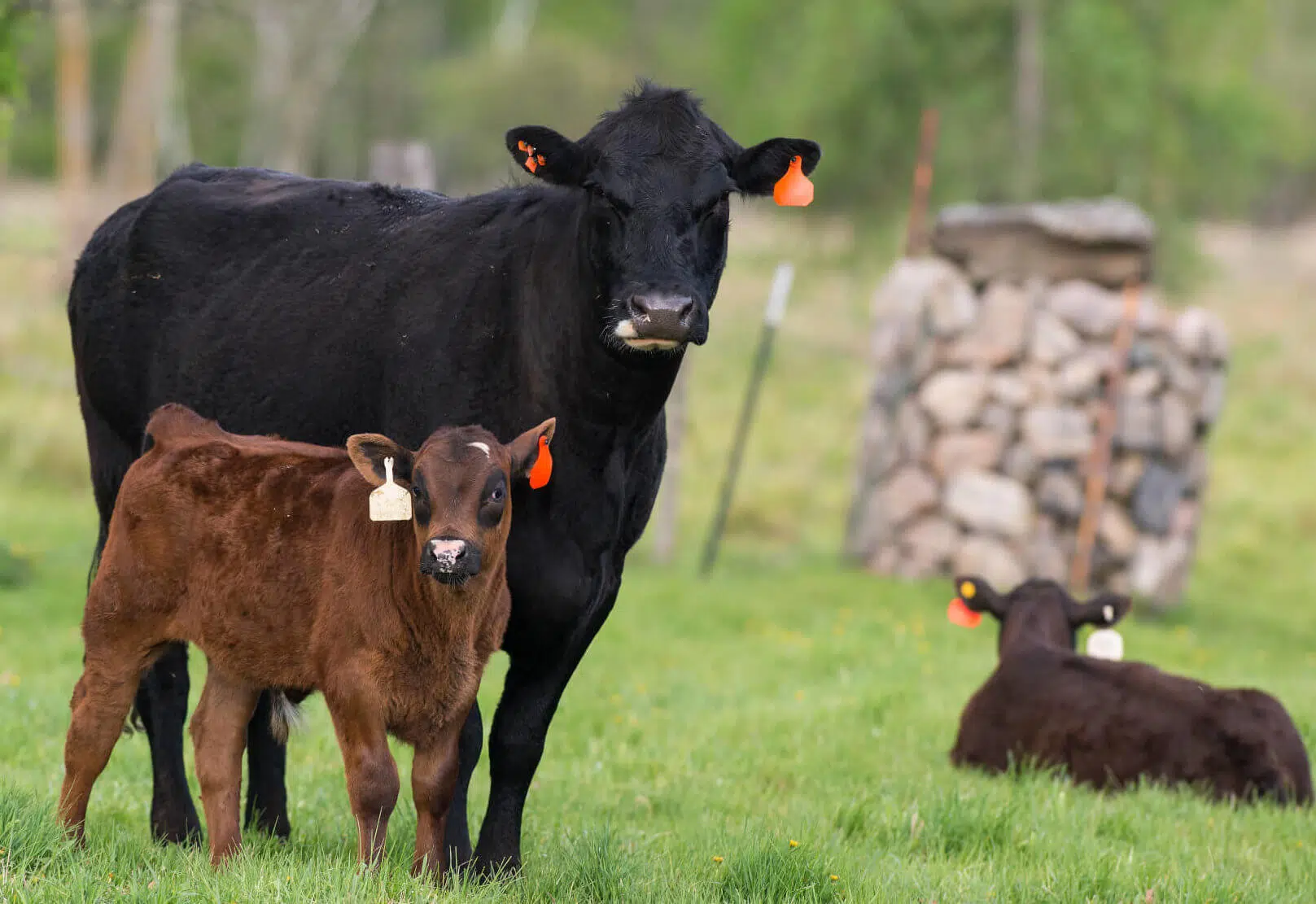Improving the lifetime performance of a beef herd will greatly impact the success and profitability of your farming enterprise.
Beef farmers need a cow that delivers a live calf without difficulty, maintains her body weight and condition, comes in to heat promptly, conceives early in the breeding season, nourishes a developing foetus, and adequately nurses the calf through to weaning. Any factor that prevents this from happening will negatively impact the reproduction efficiency and lifetime performance of a herd.
Assessing reproduction
Always keep detailed, accurate breeding and calving records. Recording performance at herd level and for individual cows and calves is essential for reproduction management. It reveals the most reproductive animals that are profitable to keep and those that should be culled, and is a very worthwhile investment in time and effort. The information that should be gathered for reproduction analysis is shown in Table 1.
Table 1: Measures of reproduction efficiency in cattle

Controlling the breeding and calving season
Improving herd reproduction efficiency does not only mean producing more calves, but also getting more cows pregnant faster that will result in a more tightly controlled calving period. Cows go through a period of temporary infertility after calving called anoestrus. Managing this period after calving will help the cow to come in to heat promptly and improve the chance for the animal to get pregnant in the breeding period when the bulls are introduced. Thus, cows calving in the first three-week period of the calving season will have more chances to come in to heat and conceive.

The benefits of a controlled calving and breeding season include:
- easier management of cows and calves;
- an even batch of calves;
- increased weaning weights;
- a reduced labour requirement at calving;
- fewer calf health problems;
- poor performing cows cannot hide;
- reduced production costs; and
- greater financial returns.
Body condition scoring
Body condition scoring (BCS) is a practical tool for managing the reproductive performance and nutrition, including veld management and supplementation, of cows, heifers, and bulls. It is used to assess their nutritional status at different times of the year. A cow’s condition should be assessed at key time points, including at mating, during late pregnancy, at calving, and again at weaning.
Nutrition
Nutritional planning forms an important part of cattle management throughout the production cycle. Providing good quality and adequate veld or pasture grazing for the beef herd is of great value and will ensure sustainable reproduction efficiency. Animals have a daily requirement of nutrients depending on a variety of different factors, and a supplementation programme is necessary to provide the nutrients that are not supplied by the veld. The hormones associated with fertility are closely linked with nutrition. Strategic planning of the supplementation programme with a nutritionist will improve the reproduction efficiency of the herd. Cow nutrition and supplementation before and after calving have a great impact on the future success of the unborn calf and on the next reproduction cycle of the cow. If they are to maintain a 365-day calving interval, cows have around 80 days in which to recover from calving and become pregnant again.
Heifer management
Consider characteristics of reproductive performance when selecting replacement heifers. It is important that a heifer is cycling regularly before the first breeding season to ensure the best possible fertility. This means heifers should be developed properly and reach puberty as soon as is reasonably possible. Heifers that calve for the first time at two years of age must conceive at 14 to 15 months of age. This will improve the animal’s lifetime performance and lead to more calves weaned from the animal.
Bull management
Bull management and fertility are important to ensure reproduction efficiency success and overall herd profitability. Ensuring the bulls in the herd are ready to work requires forward planning, as semen production takes 60 days. The bulls must be in good health at least 10 weeks before the breeding season starts.
The following factors are important to check and monitor before and during the breeding season:
- breeding soundness, including testicles, penis, and semen quality;
- assessing mating ability and libido;
- health treatments up to date;
- feet, legs, and locomotion scoring;
- correct body condition score (ideally 3,0 to 3,5); and
- optimum nutrition for fertility.
Herd health
A well-planned herd health programme is essential to improve and maintain reproduction efficiency. Knowing some of the more common reproductive problems, and the timing during which they typically occur, can help narrow down the source of a particular problem. Work closely with your local veterinarian to build immunity against diseases that commonly affect cattle in your area.
Summary for lifetime performance
Reproduction efficiency can greatly influence the lifetime performance and profitability of a beef herd. Cows that do not produce calves efficiently use resources that could be better used to support more productive animals. Many different aspects need to be optimally managed together to achieve optimal lifetime performance in a beef herd. Record-keeping is the key to success and reproduction efficiency begins well in advance of breeding, with proper selection of breeding herd replacements. Evaluate reproduction from both the female and male and constantly look for signs of potential reproductive problems. Animals should be in good general health and under low stress to maintain reproduction efficiency in the herd. Knowledge is the beginning of change.









